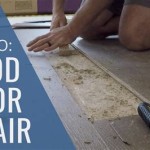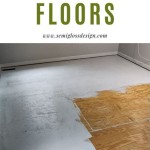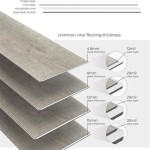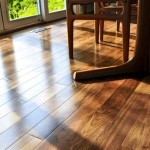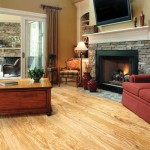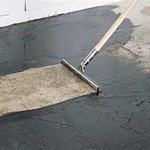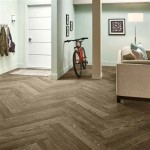How To Remove Super Glue From Hardwood Floors Without Sanding
Super glue, also known as cyanoacrylate adhesive, provides an instant bond useful for various household repairs. However, its quick-setting nature often results in accidental spills onto unwanted surfaces, including hardwood floors. Removing super glue from hardwood can be challenging, as the adhesive forms a strong bond that can potentially damage the floor's finish if approached incorrectly. Sanding, while effective, removes the finish, requiring refinishing the affected area. This article outlines several methods for removing super glue from hardwood floors without resorting to sanding, preserving the integrity of the floor's surface.
Understanding the Nature of Super Glue and Hardwood Finishes
Before attempting any removal method, it is crucial to understand the chemical composition of super glue and the properties of a hardwood floor's finish. Cyanoacrylate adhesives polymerize rapidly upon contact with moisture, creating a strong, inflexible bond. This bond adheres strongly to various surfaces, including the protective coating on hardwood floors. Most modern hardwood floors are finished with polyurethane, varnish, or lacquer, providing a durable and aesthetically pleasing layer. Aggressive solvents or abrasive techniques can dissolve or scratch this finish, leading to discoloration, dullness, or even complete removal of the protective layer.
Therefore, the objective is to weaken the bond between the super glue and the floor's finish without compromising the finish itself. Solvents that can dissolve cyanoacrylate adhesives without significantly affecting common hardwood finishes are preferred. Mechanical methods, when used, require precision and gentleness to avoid scratching or gouging the surface.
Methods for Removing Super Glue Without Sanding
Several methods exist for removing super glue from hardwood floors without sanding. The effectiveness of each method depends on the size of the spill, the type of super glue used, and the type of finish on the floor. It is always recommended to test any method on an inconspicuous area first to ensure it does not damage the finish.
1. Using Acetone (Nail Polish Remover)
Acetone is a common solvent capable of dissolving cyanoacrylate adhesives. However, acetone can also affect certain types of hardwood finishes, particularly lacquer finishes. Therefore, a spot test in an inconspicuous area, such as under furniture or in a closet, is essential before proceeding.
To use acetone safely:
- Ventilate the area: Open windows and doors to ensure adequate ventilation, as acetone fumes can be irritating.
- Protect surrounding areas: Cover the area around the super glue spill with painter's tape or a cloth to prevent accidental contact with the acetone.
- Apply acetone: Soak a cotton ball or soft cloth with acetone. Gently dab the super glue spot, allowing the acetone to saturate the adhesive. Do not pour acetone directly onto the floor.
- Allow dwell time: Let the acetone sit on the super glue spot for a few minutes (2-5 minutes) to soften the adhesive. Periodically check the finish for any signs of damage.
- Gently scrape: Use a plastic scraper or a blunt-edged tool (like a credit card) to gently lift the softened super glue. Avoid applying excessive pressure, which can scratch the finish.
- Repeat as needed: If the super glue remains, repeat steps 3-5 until it is completely removed.
- Clean the area: Once the super glue is removed, wipe the area with a clean, damp cloth to remove any acetone residue. Dry the area thoroughly.
- Inspect for damage: After cleaning, carefully inspect the area for any signs of damage to the finish. If the finish appears dull or discolored, a specialized wood polish or restorer may be needed.
Acetone works by breaking down the polymer chains of the cyanoacrylate, weakening its bond to the floor's finish. The gentle scraping then physically removes the softened residue. It is crucial to work slowly and patiently to avoid damaging the underlying wood.
2. Using Warm, Soapy Water
For smaller, less stubborn super glue spills, warm, soapy water can be an effective and less harsh alternative to acetone. This method is particularly suitable for freshly spilled super glue before it has fully hardened.
To use warm, soapy water:
- Prepare the solution: Mix a few drops of mild dish soap with warm water in a bowl or bucket.
- Apply the solution: Soak a soft cloth with the soapy water and gently apply it to the super glue spot. Ensure the area is thoroughly wet.
- Allow dwell time: Let the soapy water sit on the super glue for 10-15 minutes. This allows the water to penetrate and soften the adhesive.
- Gently scrape: Use a plastic scraper or a soft-bristled brush to gently scrub the softened super glue. Avoid using abrasive materials that can scratch the finish.
- Wipe and dry: Wipe the area with a clean, damp cloth to remove any soap residue and loosened super glue. Dry the area thoroughly with a clean towel.
- Repeat if necessary: If the super glue remains, repeat steps 2-5 until it is completely removed.
Warm water helps to soften the super glue, while the soap acts as a lubricant, aiding in the removal process. This method is less likely to damage the floor's finish compared to acetone, making it a preferred choice for delicate finishes.
3. Using Cooking Oil or Mineral Oil
Oils, such as cooking oil (vegetable, olive, or canola) or mineral oil, can also be used to loosen super glue from hardwood floors. Oils work by penetrating the adhesive and disrupting its bond with the surface.
To use cooking oil or mineral oil:
- Apply the oil: Apply a small amount of cooking oil or mineral oil directly to the super glue spot. Ensure the entire area is covered.
- Allow dwell time: Let the oil sit on the super glue for at least 30 minutes, or even several hours for stubborn spots. This allows the oil to penetrate and weaken the adhesive.
- Gently scrape: Use a plastic scraper or a blunt-edged tool to gently lift the softened super glue. Be careful not to scratch the finish.
- Wipe and clean: Wipe the area with a clean, damp cloth to remove any oil residue and loosened super glue. You may need to use a mild dish soap solution to remove all traces of oil.
- Dry thoroughly: Dry the area thoroughly with a clean towel to prevent any water damage.
- Inspect for residue: Check the area for any remaining oil residue. If necessary, repeat the cleaning process with a mild dish soap solution.
The prolonged dwell time is crucial for oils to effectively break down the super glue bond. This method is generally safe for most hardwood finishes, but a spot test is still recommended to ensure compatibility.
4. Using a Hair Dryer (with Caution)
Heat can soften super glue, making it easier to remove. A hair dryer can be used to apply localized heat to the adhesive. However, excessive heat can damage certain hardwood finishes, so it is crucial to exercise caution and monitor the surface carefully.
To use a hair dryer safely:
- Set the hair dryer: Set the hair dryer to its lowest heat setting.
- Apply heat: Hold the hair dryer a few inches away from the super glue spot and apply heat in a sweeping motion. Avoid focusing the heat on one spot for too long.
- Check for softening: Periodically check the super glue to see if it is softening. It should become pliable and slightly tacky.
- Gently scrape: Use a plastic scraper or a blunt-edged tool to gently lift the softened super glue. Work slowly and carefully to avoid scratching the finish.
- Cool and clean: Once the super glue is removed, allow the area to cool down. Wipe the area with a clean, damp cloth to remove any residue. Dry the area thoroughly.
It is vital to keep the hair dryer moving and avoid overheating the surface. Overheating can cause the finish to bubble, crack, or discolor. If any signs of damage appear, stop immediately and consider using a different method.
Preventive Measures
The best approach to dealing with super glue spills is to prevent them from happening in the first place. When working with super glue, take the following precautions:
- Work in a well-ventilated area: This helps to minimize the inhalation of fumes and allows for easier cleanup in case of spills.
- Protect surfaces: Cover the work area with drop cloths or protective sheeting to prevent spills from reaching the floor.
- Use small amounts of glue: Apply only the amount of super glue needed for the task. This reduces the risk of excess glue squeezing out and creating spills.
- Wipe up spills immediately: If super glue does spill, wipe it up immediately with a clean cloth or paper towel. The longer it sits, the harder it becomes to remove.
- Wear gloves: Wearing disposable gloves can protect your hands from accidental contact with super glue.
By taking these preventive measures, the likelihood of super glue spills onto hardwood floors can be significantly reduced.

Removing Glue Or Adhesive From Hardwood Floors The Speckled Goat

Removing Glue Or Adhesive From Hardwood Floors The Speckled Goat

4 Ways To Remove Glue From Wood Wikihow

How To Remove Glue From Hardwood Floor 7 Methods Diy

Removing Glue Or Adhesive From Hardwood Floors The Speckled Goat

4 Ways To Remove Glue From Wood Wikihow

Removing Glue Or Adhesive From Hardwood Floors The Speckled Goat

How To Remove Gorilla Glue From Wood 7 Steps With S

How To Remove Glue From Hardwood Floor 7 Methods Diy

How To Remove Gorilla Glue From Wood 7 Steps With S
See Also

